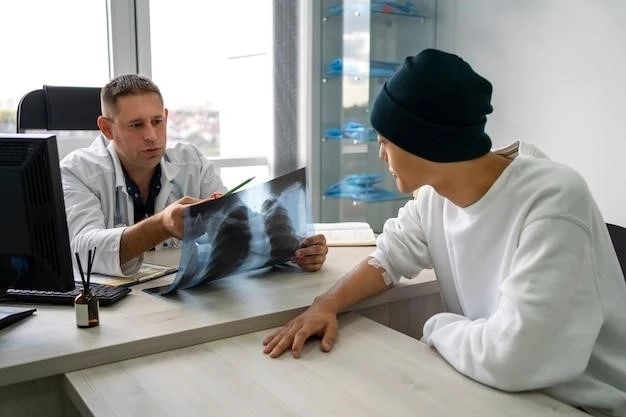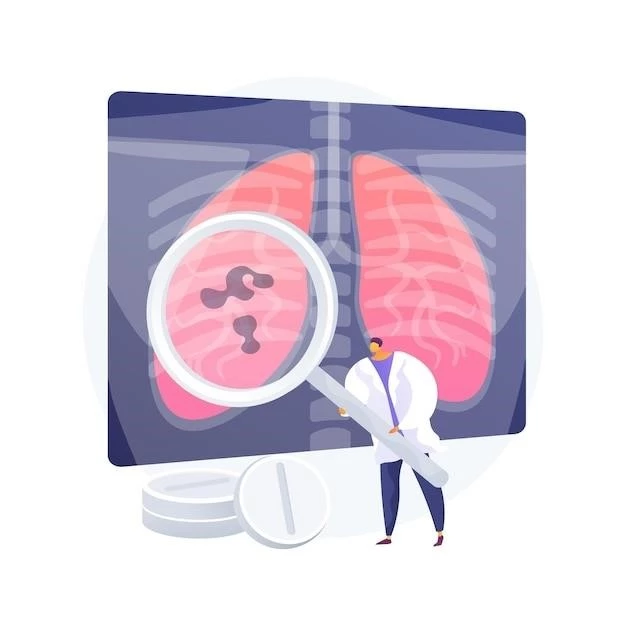Disease ౼ Lung Herniation Congenital Defect of Sternum

Congenital defects can lead to health issues like lung herniation, a condition where part of the lung protrudes through a hole in the chest wall. This article focuses on the rare congenital defect of the sternum and its correlation with lung herniation.
Introduction to Congenital Defects and Lung Herniation
Congenital defects are abnormalities present at birth, affecting different parts of the body. When it comes to the chest area, defects in the sternum (breastbone) can lead to serious complications like lung herniation. This rare condition occurs when part of the lung is pushed out through an opening in the chest wall, which can cause respiratory issues and discomfort.
Lung herniation is a medical condition that requires prompt diagnosis and treatment. Patients with a congenital sternum defect may be more susceptible to lung herniation due to structural weaknesses in the thoracic cavity. Understanding the relationship between these two conditions is crucial for effective management and long-term health.
Individuals with this combination of abnormalities may experience symptoms such as chest pain, difficulty breathing, and visible protrusions. Diagnosis often involves imaging tests to determine the extent of the herniation and the specific characteristics of the sternum defect. Treatment options can vary depending on the severity of the condition, ranging from conservative measures to surgical interventions.
Early intervention is key in managing lung herniation related to congenital sternum defects. Through appropriate medical care and surgical procedures, healthcare providers can address the underlying issues and improve the patient’s respiratory function and overall quality of life. Follow-up care is essential to monitor progress and ensure optimal recovery after treatment.
Understanding the Congenital Defect of Sternum
A congenital defect of the sternum is a birth defect that affects the breastbone, a vital component of the chest wall. This abnormality can range from mild to severe, impacting the structure and function of the thoracic cavity. In some cases, a malformed sternum can create vulnerabilities that predispose individuals to complications such as lung herniation.
The sternum plays a crucial role in protecting the organs within the thoracic cavity, including the heart and lungs. When there is a congenital defect in the sternum, the integrity of the chest wall may be compromised, increasing the risk of respiratory issues and other health challenges. Understanding the specifics of the sternum defect is essential for determining the best course of treatment.
In addition to affecting the physical appearance of the chest, a congenital sternum defect can impact the overall health and well-being of the individual. Depending on the nature of the defect, individuals may experience varying degrees of discomfort, restricted movement, and respiratory disturbances. Addressing these challenges requires a comprehensive evaluation by healthcare professionals familiar with congenital abnormalities.
By gaining a deeper understanding of the congenital defect of the sternum, medical providers can develop tailored treatment plans that address the unique needs of each patient. Whether the defect is related to lung herniation or other complications, early detection and intervention are key to promoting optimal outcomes and improving the individual’s quality of life.
Lung Herniation in Relation to Sternum Defect
Lung herniation, a condition where part of the lung protrudes through the chest wall, can be closely linked to congenital defects of the sternum. The presence of a sternum defect can create weaknesses in the chest wall, making it easier for the lung tissue to herniate or bulge outward. This abnormality can lead to respiratory complications and discomfort for affected individuals.
Individuals with a congenital sternum defect may be at a higher risk of developing lung herniation due to the structural vulnerabilities in their thoracic cavity. The relationship between these two conditions underscores the importance of thorough evaluations and monitoring to detect potential issues early on. Understanding how the sternum defect contributes to lung herniation is critical in managing the overall health of the patient.
When lung herniation occurs in relation to a sternum defect, it can present with symptoms such as chest pain, breathing difficulties, and visible protrusions in the affected area. Healthcare providers must consider the interplay between these conditions when determining the appropriate course of treatment. From diagnostic imaging to surgical interventions, a comprehensive approach is necessary to address both the sternum defect and the associated lung herniation.
By recognizing the relationship between lung herniation and congenital sternum defects, medical professionals can develop targeted strategies to improve patient outcomes and alleviate symptoms. Monitoring for any signs of respiratory distress and conducting regular follow-up assessments can help prevent complications and ensure the long-term well-being of individuals with these unique health challenges.
Diagnosis and Treatment Options
Diagnosing lung herniation in the context of a congenital sternum defect involves a comprehensive evaluation that may include imaging tests such as X-rays, CT scans, or MRI scans. These diagnostic tools help healthcare providers assess the extent of the herniation, identify the underlying sternum abnormality, and plan an appropriate treatment strategy.
Once a diagnosis is confirmed, the treatment options for lung herniation and congenital sternum defects can vary based on the individual’s specific situation. Conservative approaches such as monitoring the condition, managing symptoms, and providing respiratory support may be sufficient for mild cases. However, more severe cases may require surgical intervention to repair the sternum defect and address the herniated lung tissue.
Surgical procedures for lung herniation and sternum defects aim to correct the structural abnormalities, restore the integrity of the chest wall, and improve respiratory function. These interventions may involve techniques such as sternal reconstruction, lung tissue repositioning, and reinforcement of the thoracic cavity to prevent future herniation. The choice of surgery depends on the severity of the condition and the overall health of the patient.
Postoperative care and rehabilitation play a crucial role in the recovery process for individuals undergoing surgical treatment for lung herniation and sternum defects. Follow-up appointments, physical therapy, and respiratory exercises may be recommended to promote healing, strengthen the chest muscles, and optimize lung function. Monitoring for any recurrence of herniation or complications is essential for long-term management.
Surgical Interventions for Lung Herniation and Sternum Defects
When conservative measures are not sufficient to address lung herniation and congenital sternum defects, surgical interventions may be necessary to correct the underlying issues and improve the patient’s respiratory function. The type of surgery required depends on the severity of the condition and the individual’s overall health.
One common surgical approach for sternum defects is sternal reconstruction, where the abnormal portion of the sternum is repaired or reconstructed to enhance the chest wall’s stability. This procedure aims to correct the structural deformity and prevent further complications such as lung herniation. Surgeons may use various techniques, including bone grafts or metal plates, to strengthen the sternum.
In cases where lung tissue has herniated through the chest wall, surgical repair may involve repositioning the lung tissue and securing it in place to prevent recurrence. This process helps restore normal respiratory function and alleviates symptoms associated with lung herniation. Surgical interventions for lung herniation are tailored to each patient’s specific needs and may include reinforcing the thoracic cavity to provide long-term support.
After surgical treatment for lung herniation and sternum defects, individuals typically undergo postoperative care to aid in the recovery process. This may include monitoring for complications, managing pain, and promoting mobility to prevent complications. Long-term follow-up is crucial to assess the effectiveness of the surgery and ensure optimal outcomes for the patient’s respiratory system and overall health.
Importance of Early Intervention and Follow-Up Care
Early intervention plays a crucial role in managing lung herniation associated with congenital sternum defects. Timely diagnosis and treatment can help prevent complications, improve outcomes, and enhance the patient’s quality of life. Healthcare providers must remain vigilant for signs of respiratory distress, chest pain, or other symptoms that may indicate the need for further evaluation.
Following surgical interventions for lung herniation and sternum defects, diligent follow-up care is essential to monitor the patient’s progress and address any postoperative concerns. Regular check-ups, imaging studies, and pulmonary function tests can help healthcare professionals assess the success of the treatment and identify any potential issues that require attention.
Long-term management of lung herniation and congenital sternum defects may involve ongoing support from a multidisciplinary healthcare team, including pulmonologists, thoracic surgeons, and physical therapists. Collaborative efforts are essential to ensure that patients receive comprehensive care tailored to their individual needs and optimize their respiratory health over time.
Education and support for patients and their families are also vital components of effective management. Providing information about the condition, treatment options, and lifestyle modifications can empower individuals to take an active role in their health and well-being. Encouraging compliance with follow-up appointments and recommended therapies can help prevent complications and promote long-term success in managing lung herniation and congenital sternum defects.
